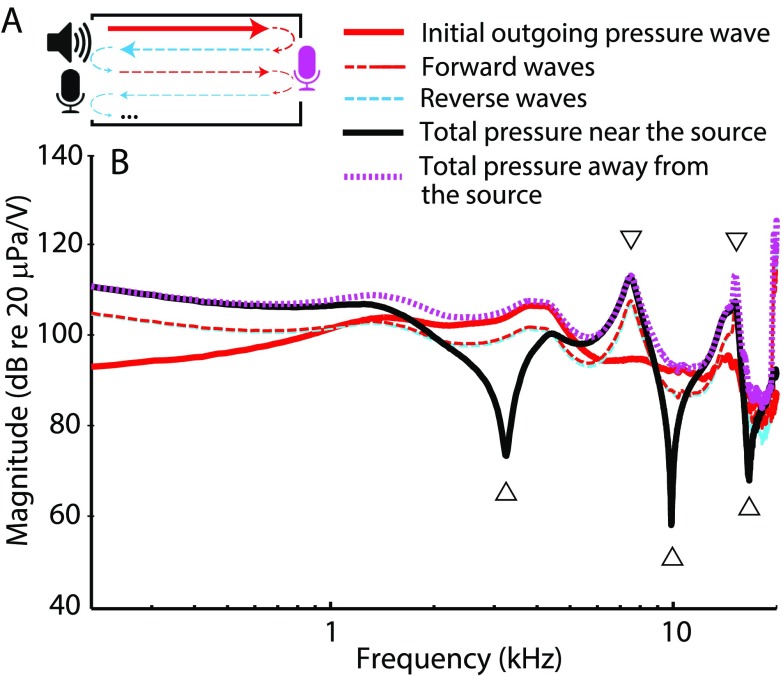FIG. 1.
(Color online) Inter-relations between pressures measured in a tube closed with a flat metal plate at one end and with an OAE probe (sound source and microphone) at the other. To generate the pressures shown, the sound source was driven using a voltage waveform consisting of a constant-amplitude chirp. Because of interference between waves reflected within the cavity [dashed lines in (A) and (B)], the total pressure measured anywhere in the tube—whether near the sound source [solid black line (B)] or at the opposite end [dotted magenta line (B)]—differs from the pressure measured in an anechoic tube of the same characteristic impedance [initial outgoing wave, solid red line in (A) and (B)]. Half-wave resonances (downward triangles) boost the total pressure measured at both ends, while quarter-wave nulls (upward triangles) affect the pressure measured near the sound source when the forward and reverse waves are out of phase.

